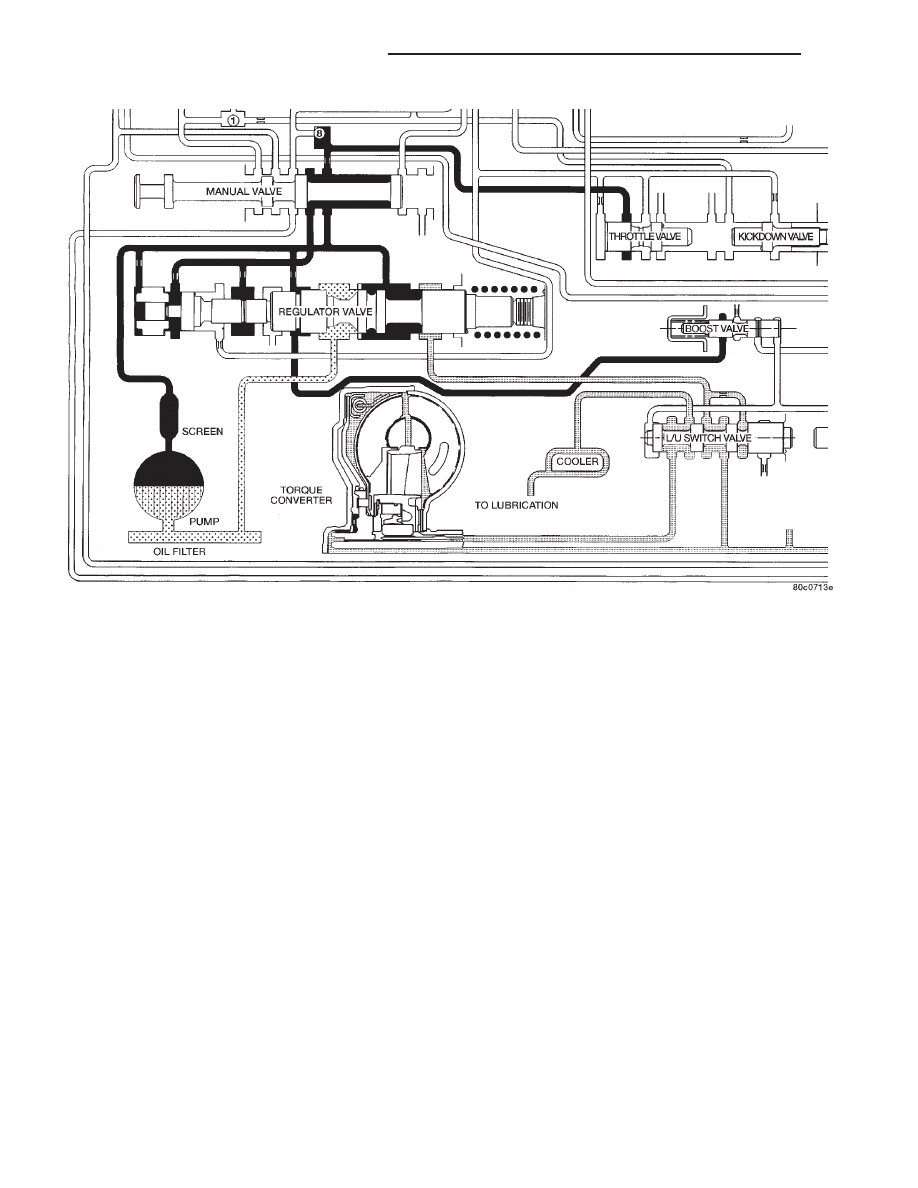Jeep Grand Cherokee WJ. Manual - part 410

Meanwhile, the torque converter is filled slowly. In
all other gear positions (Fig. 23), fluid flows between
two right side lands to the switch valve and torque
converter. At low pump speeds, the flow is controlled
by the pressure valve groove to reduce pressure to
the torque converter. After the torque converter and
switch valve fill with fluid, the switch valve becomes
the controlling metering device for torque converter
pressure. The regulator valve then begins to control
the line pressure for the other transmission circuits.
The balance of the fluid pressure pushing the valve
to the right and the spring pressure pushing to the
left determines the size of the metering passage at
land #2 (land #1 being at the far right of the valve in
the diagram). As fluid leaks past the land, it moves
into a groove connected to the filter or sump. As the
land meters the fluid to the sump, it causes the pres-
sure to reduce and the spring decreases the size of
the metering passage. When the size of the metering
passage is reduced, the pressure rises again and the
size of the land is increased again. Pressure is regu-
lated by this constant balance of hydraulic and
spring pressure.
Fig. 23 Regulator Valve in Neutral Position
21 - 22
42RE AUTOMATIC TRANSMISSION
WJ
DESCRIPTION AND OPERATION (Continued)